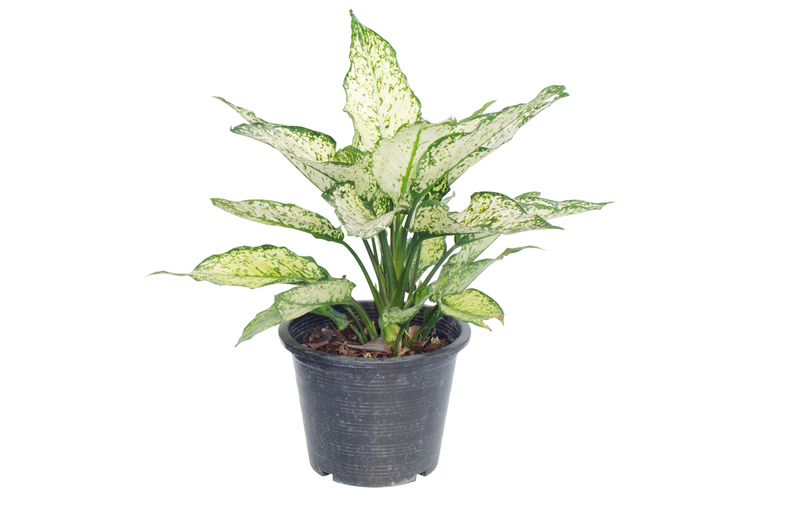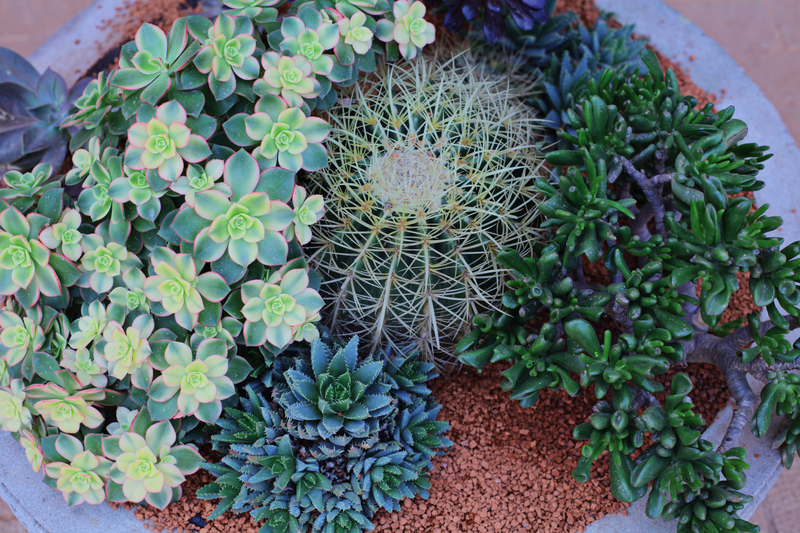Embrace, Engage, Excite: Kids in the Garden Space
Posted on 28/08/2025
Embrace, Engage, Excite: Kids in the Garden Space
Gardening is not just a hobby--it's an adventure, a source of learning, and an opportunity for discovery, especially for children. Introducing kids to the garden space is more than simply teaching them to plant seeds; it's about nurturing their curiosity, responsibility, and love for nature. In this comprehensive guide, we will explore various ways to embrace, engage, and excite kids in the garden, ensuring a fun and fruitful experience for every young gardener.

Why the Garden is the Perfect Playground for Kids
The garden space offers unique opportunities for hands-on learning and experiential growth. Let's explore why gardening with children is so beneficial:
- Physical Activity: Digging, planting, watering, and harvesting keep kids moving, helping develop coordination and strength.
- Sensory Engagement: The garden stimulates all five senses, introducing kids to different textures, smells, colors, tastes, and sounds.
- Educational Growth: Gardening introduces concepts from science, math, nutrition, and environmental stewardship in an engaging manner.
- Emotional Well-being: Spending time in nature helps kids relax, reduce stress, and improve mood.
- Responsibility: Caring for plants teaches kids about commitment and patience.
As we dive deeper into engaging children with the garden, you'll discover practical ways to make gardening accessible and enjoyable for kids of all ages.
How to Embrace Kids in the Garden Space
Foster a Welcoming Environment
Start by making the garden space inviting to children. Create areas specifically designed for them where they have freedom to explore and play safely. Consider:
- Kid-Sized Tools: Invest in sturdy, child-friendly gardening tools that are the right size for small hands.
- Personal Plots: Give each child a small section or container where they are in charge. This encourages ownership and pride.
- Comfortable Spaces: Add seating such as benches or log stools for resting and observing.
- Safety First: Ensure paths are clear, and keep harmful chemicals and tools out of reach.
Include Kids in the Planning Process
Let children help choose what to plant. Offer options and discuss why certain plants might do better than others, depending on your region and season. When kids have a say in what grows, their excitement--and their engagement--soar.
- Colorful Flowers: Sunflowers, marigolds, and zinnias are easy to grow and fun to watch bloom.
- Edible Plants: Radishes, lettuce, strawberries, cherry tomatoes, and herbs are quick to mature and offer instant gratification.
Engaging Kids in Garden Activities
Creative and Fun Gardening Projects
To truly engage kids in the garden space, plan a variety of hands-on activities:
- Seed Starting: Teach kids how to plant seeds in egg cartons or small pots. Track growth with a daily journal.
- Garden Art: Encourage creativity by painting plant markers, making wind chimes, or designing stepping stones.
- Scavenger Hunts: Create a list of items to find in the garden--different leaves, bugs, or flowers--transforming a walk into an adventure.
- Composting: Involve children in recycling food scraps. Explain decomposition and watch the process together.
- Building Bug Hotels: Use sticks, pinecones, and bamboo to make shelters for helpful insects.
- Creating Fairy or Dinosaur Gardens: Use miniature figurines, rocks, and plants to make themed play spaces.
Learning Through Observation and Exploration
Encourage children to observe the changes in the garden. Give them a magnifying glass to study insects or journal their observations in a notebook. Ask guiding questions:
- What new things do you see today?
- How does this plant feel or smell?
- Can you spot any pollinators?
- What's different since the last time we visited?
Learning is most effective when it's fueled by curiosity!
Encourage Responsibility and Independence
Assign regular gardening tasks suited to your child's age--watering plants, pulling weeds, or harvesting veggies. These responsibilities help foster independence and self-esteem.
Exciting Young Gardeners: Making Gardening Irresistible
Celebrate Every Success
Gardening is full of little victories. Whether it's a first sprout, a blooming flower, or picking the season's first tomato, celebrate these moments. Take photos, share their progress with family, or prepare a meal using homegrown produce together.
Connect Gardening to Bigger Lessons
Gardening can spark discussions on topics ranging from healthy eating to conservation. Highlight the life cycle of plants, the importance of bees, or how gardening helps the environment. Link these experiences to broader subjects in science and social studies for older children.
Host Garden-Themed Events
- Garden Parties: Invite friends for a picnic, potluck, or harvest celebration.
- Competitions: Hold the "biggest sunflower" or "funniest vegetable" contest.
- Storytime: Read garden-themed books in the heart of your greenery.
Integrate Technology Thoughtfully
Children love technology--harness it in your garden adventures!
- Photography: Let kids use a camera or phone to document their favorite plants or daily changes.
- Educational Apps: Use gardening or nature apps to help them identify plants, bugs, and birds.
- Virtual Sharing: Encourage kids to create a simple blog or digital scrapbook of their garden journeys.
Tips for Sustaining Kids' Interest in the Garden
- Keep Sessions Short: Young children may have limited attention spans. Adjust gardening time based on their enthusiasm.
- Vary Activities: Mix up tasks--some days focus on planting, others on crafts or harvest.
- Tell Stories: Relate gardening tasks to stories or myths, like Jack and the Beanstalk, to spark imagination.
- Invite Friends: Group activities can make gardening more social and exciting.
- Incorporate Play: Remember, for younger children, playfulness is part of the learning.
Incorporating Gardening into Everyday Life
From Garden to Table
Use the garden as a springboard for culinary adventures. Involve kids in picking, washing, and preparing salads or simple meals from their harvest. Discuss nutrition, taste, and the excitement of "eating what you grow."
Link with School and Community
See if your child's school has a gardening club or propose starting one. Community gardens can be a great way to connect with others, share knowledge, and foster a love for the environment outside your immediate family circle.
Recommended Plants and Projects for Kids' Gardens
Best Plants for Children's Gardens
- Sunflowers: Large, quick-growing, and striking--children love measuring their progress.
- Radishes: Germinate quickly, offering speedy results.
- Snap Peas: Sweet-tasting and easy to pick.
- Marigolds: Bright, cheerful, and pest-resistant.
- Mint: Fast-growing with a delightful scent, but best kept in containers.
Easy Garden Projects for Kids
- Upcycled Planters: Turn milk jugs, boots, or tin cans into creative containers.
- Pinecone Bird Feeders: Smear peanut butter on pinecones and roll them in birdseed--hang for feathered friends to enjoy.
- Bug Bingo: Create a bingo card of insects to spot in the garden; offer a prize for completing it.
- Growing Microgreens: Quick to harvest and perfect for windowsills or small spaces.
- Sensory Pathways: Lay out different textured materials--stones, mulch, grass--for barefoot exploration.
Overcoming Challenges: Gardening with Kids
Every gardener encounters setbacks. With patience and creativity, you can transform obstacles into learning experiences:
- Lack of Space: Try container gardening or vertical gardens. Even a small balcony can become a lush mini-jungle!
- Short Growing Seasons: Get a head start by germinating seeds indoors or choose fast-growing crops.
- Pest Issues: Teach kids about "good" and "bad" bugs. Explore organic and kid-safe pest control methods.
- Ups and Downs: If a plant dies, discuss what might have happened and brainstorm solutions together. Gardening is about perseverance!
Garden Safety Tips for Kids
- Supervision: Always supervise young children during gardening activities.
- Sun Protection: Provide hats, sunscreen, and plenty of water breaks.
- Safe Tools: Use age-appropriate, blunt-edged tools.
- Plant Choices: Avoid toxic plants; ensure everything grown is safe for children and pets.
- Hygiene: Remind kids to wash hands after gardening, especially before eating.

Long-Term Benefits: Seeds for the Future
Inviting children into the garden space goes far beyond a single harvest. These early experiences:
- Develop an appreciation for nature and sustainability
- Empower children to make healthy food choices
- Enhance academic skills through hands-on learning
- Foster connection between generations
- Provide lasting memories of family and friendship
Conclusion: Let the Adventure Begin
Garden spaces are living classrooms, play spaces, and sources of endless wonder. By embracing, engaging, and exciting kids in the garden, you plant seeds of curiosity, empathy, and lifelong health. Whether you have acres of land or a single sunny window, the joy of gardening with children is within reach. Invite your young ones outside, hand them a trowel, and watch as they flourish alongside their favorite plants. The best lessons are those learned in the dirt--roots deep, heads high, and hearts open to discovery.
Start your family's gardening adventure today, and watch your little gardeners bloom!

